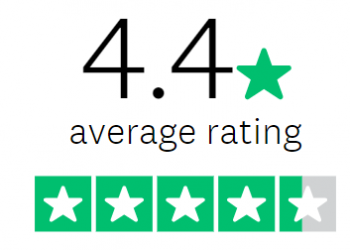The federal government has appointed a panel to undertake a review of the three pillars of the Australian retirement income system: the age pension, the superannuation guarantee (SG) and voluntary contributions. Here are the key issues I believe the review panel should highlight for further attention.
I
must admit that I am not convinced that the retirement income review will deal
with anything that the Morrison government deems remotely problematic for its
re-election prospects, such as the inclusion of at least a portion of the
family home in the pension assets test, increasing the age pension eligibility
age and increasing the superannuation guarantee (SG) beyond 9.5 per cent.
Lifting
the SG gradually to 12 per cent, as proposed, would increase fund flows to
industry super funds, whose values are aligned with those of the unions – a group
whose influence this government would very much like to diminish.
Having
said that, it must be acknowledged that this review is an opportunity to
confirm the baseline information on which future policy decisions can be made
to deliver a much-needed reset of aspects of our retirement income system.
I
don’t pretend to have all the answers but I do know that the best way forward
involves strong political leadership and industry consultation, which will
hopefully follow this fact finding review. Here are some points I urge the
review panel members to consider.
Shifting
the focus from accumulation to draw down
The
focus of the Australian superannuation system until now has been on the
accumulation phase – and that has been successful. Recent research has shown
more than half of Australians aged 66 are not accessing the aged pension at all
because their assets and incomes are too high, and only 20 per cent are on
a part pension.
Regardless,
both self-funded retirees and those entitled to the age pension need support,
education and appropriate retirement-income solutions. The focus now needs to
shift to helping all Australians achieve their income needs and goals in
retirement.
There
are a number of obstacles that need to be removed, or at least addressed, in
order to optimise superannuation savings for the average Australian such as
housing affordability, wages growth and persistently low interest rates. There
is also the issue of too many women still retiring with inadequate
superannuation balances.
The
first generation of contributors to our compulsory superannuation system is
about to hit retirement. Super funds must be prepared to meet the retirement
income needs of this group.
The
age pension system is outdated
Since
the Commonwealth age pension was introduced in Australia back in 1909, life
expectancy has gone up 25 years for men, to 80.5 years, and 26 years for women,
to 84.6 years. Yet the age pension eligibility age has increased by just one
year for men and six years for women.
With
many Australians now enjoying a good 30 years of retirement, clearly,
something’s gotta give. The age pension framework has simply not kept pace with
Australia’s changing lifestyles and demographics. Its original role as a safety
net has been transformed. The age pension now primarily serves as a
supplementary source of income to superannuation savings.
Improve
incentives to keep seniors working longer
People
are living longer and the age pension eligibility age is increasing, albeit far
too slowly, but incentives to keep working are not developing quickly enough.
People
aged over 65 are healthier than ever before and, increasingly, want to continue
to work in some capacity. My experience with elderly people also has shown that
they are generally happier and healthier when they are productively
contributing to society so long as the work is not too stressful. But financial
incentives such as the Pension Work Bonus need to be improved and employers’
attitudes towards older workers must change. Tax incentives to employers of
seniors would also encourage them to employ older Australians or keep more
retiree-age people in the workforce.
Strategies
to increase the ratio of workers to people on welfare
As
the Australian population continues to age, the ratio of workers to people
dependent on welfare falls. The vast majority of welfare payments are made to
age pensioners and people on disability pensions; a relatively small amount
goes to unemployment benefits. This trend is largely due to the fact that
people are living longer but also due to the natural phenomena that as
societies become more affluent, their citizens have less children per capita.
This trend is obviously unsustainable and needs to be reversed if possible.
A
significant lever to correct this imbalance is immigration. There is never a
shortage of people wanting to migrate to Australia, and generally migrants are
young people (the median age in 2017-18 was 26), often with families, ready to
work and spend and contribute to GDP growth.
Sadly,
more recently, there has been populist rhetoric against immigration and, as a
result, the number of migrants and people with temporary visas allowed into
Australia has dropped significantly in the past few years.
I
have no doubt that this is one of the factors causing our economy to slow. The
most counter intuitive reason I have heard is that immigration puts strain on
our infrastructure therefore we should slow it down for a while. This is an
infrastructure problem not an immigration problem.
If
some of the lifts in a building broke down, you would not stop new tenants
moving in or existing tenants from hiring new staff until the owners got around
to fixing the lifts. You would fix the lifts immediately, make do with what you
have in the meantime so long as it was safe and allow business as usual. It is
absurd to suggest that because our infrastructure needs to be enhanced we
should reduce population growth. The very core of GDP growth is population
growth.
With
interest rates at record lows, now would be a great time to borrow to
fund massive infrastructure enhancements, creating jobs and GDP growth. A new
influx of immigrants could help do much of the work, and at the same time
increase the ratio of workers to people on welfare.
Instead,
the government has taken a populist approach and fought to keep our budget in
surplus, potentially missing a once in a century opportunity to borrow money
for next to nothing to fund much needed infrastructure enhancements.
Former
political foes, Paul Keating and John Hewson, have both spoken about the
opportunity for an infrastructure-led recovery. I hope the government takes
notice rather than taking the road that secures the most votes in the short
term.
Increase
the superannuation guarantee
Labor
introduced legislation in 2012 to increase the super guarantee to 12 per
cent by this year. The timetable was subsequently changed by the Abbott
government with the SG now set to hit 12 per cent by 1 July 2025.
However,
the Morrison government is facing increasing pressure from its own MPs and
senators to delay or abolish the planned increases. Those on the other side of
the debate such as Rice Warner are saying that a higher SG would alleviate
pressure on the age pension system and grow capital markets, which would
benefit the entire economy.
In
my view, any increase to the SG rate equates to money out of the economy in the
short term. The government has said that the current precarious state of the
Australian economy is the reason for delaying this.
However,
I suspect that the real reason is that it would see more money flow into the
coffers of industry super funds, some of which would inevitably find its way to
the Labor Party.
Address
housing affordability
Another
major issue that directly impacts the pension system is housing affordability.
Our retirement system was built on the assumption that most people would own
their own home by the time they finished working. As it currently stands, an
increasing number of Australians are likely to be paying rent in retirement,
placing greater pressure on the pension system.
Recent
modelling from the Grattan Institute found that the number of people aged over
65 who own their own home will fall from the current 76 per cent to 57 per
cent by 2056. For low-income retirees, it will be well under half. The pension
system, as it currently stands, is simply not equipped to manage these
pressures. Rents have been outpacing the CPI-indexed government rent assistance
payments for some time now, particularly in the major cities. There is a
definite need to increase assistance for the growing number of retirees who do
not own their own homes as well as thinking outside the box on housing
affordability.
Treatment
of the family home
Is
it time for the high-value family homes to be included in the age pension assets
test? Again, the likelihood is that no politician would touch this with a barge
pole. Just look at what happened to Labor after it took the removal of franking
credits to the last election.
Be
that as it may, I don’t believe we should throw our hands in the air and give
up on the implementation of big picture policy reform in this country. As Paul
Keating recently remarked, large scale reform will be necessary to halt the
increasing levels of inequality in our society.
There
are clear anomalies with the current system. For example, a retired couple with
a home worth $4 million and $245,000 in assets is eligible for a full pension,
while a couple with a home valued at $500,000 and $860,000 in assets will
receive no pension at all.
However,
there are two sides to this issue. The above example shows an extreme situation
that I am sure most would consider to be quite unfair to the second couple.
Others would say that it is equally unfair that a couple who have lived their
lives in an affluent area and are entrenched in that community, are forced to
downsize to the point of having to move to where housing is more affordable.
So,
this is certainly a tricky one. Innovation and competition in the home equity
release product market may result in retirees being able to remain in their
homes, but to cheaply and efficiently access some of the equity to top up their
retirement incomes.
Conclusion
In
any case, these changes are going to be unpopular. Whichever way you look at
it, they will take money out of the pockets of elderly Australians, which are a
large and growing portion of the voter base. However, the longer this issue is
left, the worse it will become. Slow and steady change over the next 10 to 20
years will be much more palatable than large sudden shocks. This is also why we
should look to employ other mechanisms such as migration to minimise the
impacts on the elderly.

















